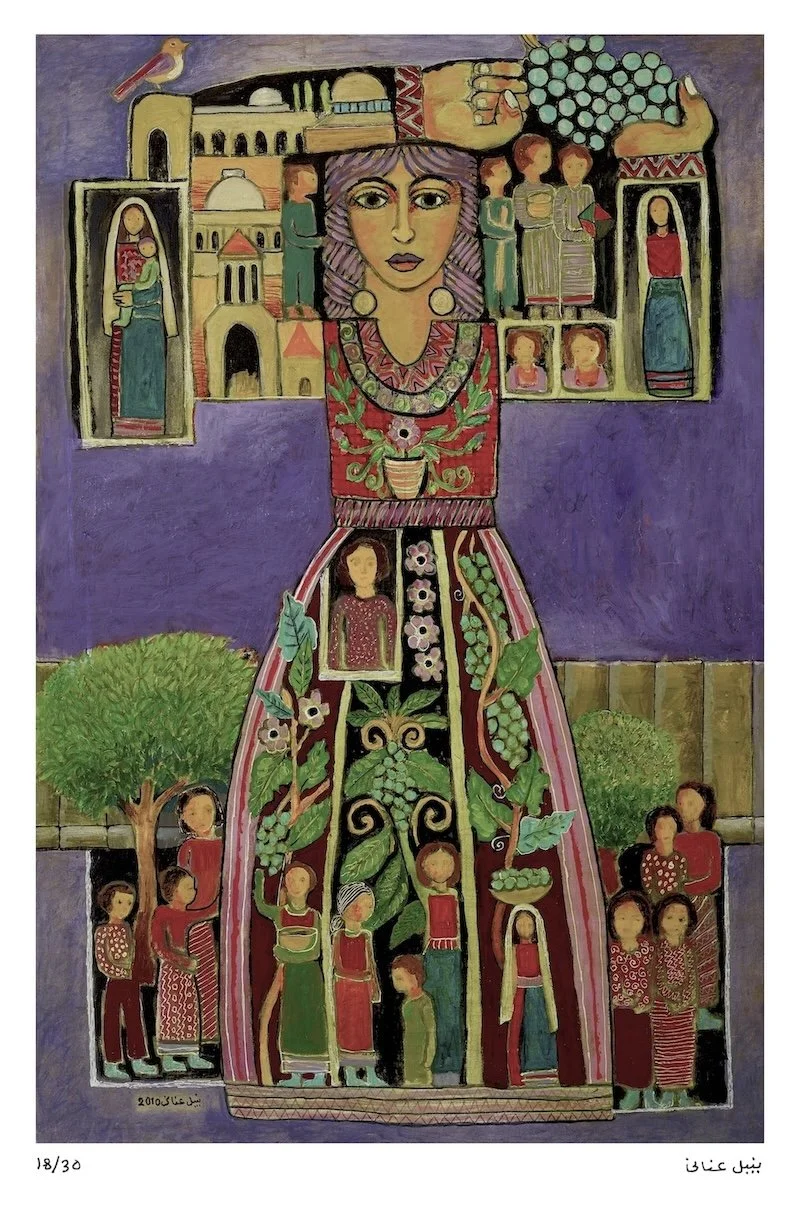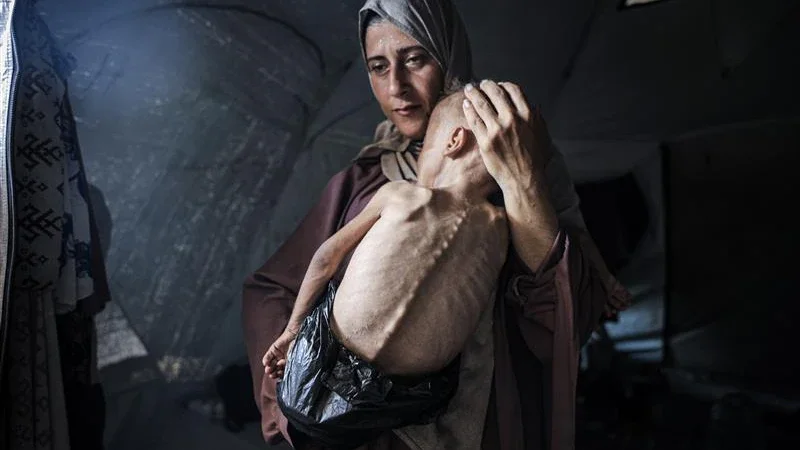Awladi
Ekphrasis/Madonna Project
Client work from the archive: Mother, as a Life Source
Project Brief
“The Madonna archetype belongs not to any one religion, but to the deep psyche of humanity.” - Marion Woodman
“The image of the Madonna is a palimpsest: under each layer of paint is a century’s worth of longing, doctrine, and fear.” - Marina Warner
Ekphrasis is a process of birthing art from art. In EKPHRASIS/MADONNA we enter into art history for call and response.
Starting from a work which individually calls us, we explore, research, write, imagine, gather and respond to The Madonna in image.
- Memory Cult
A mother is both blessed and burdened by all that she carries.
The Palestinian Icon by Nabil Anani
The Beginning: Mother, Archetype, Discovery
Before this Memory Cult project, I knew very little about the Madonna archetype, beyond the depictions I’d seen in the Christian churches I reluctantly visited in my younger years. To me, she always appeared to be burdened by a sadness, as though she was suffering.
It wasn’t until I began doing some research that it occurred to me that the Madonna could be more than a religious figure, she could symbolise both motherhood and humanity, an inseparability that feels essential. From this I began to wonder how I could bring her into the present, borrowing her image and reimagining her as a moral compass for humanity.
In the past, I had rejected the Madonna’s antiquated presence, associating her with the way religion was forced into my life and the unanswered questions I had about what I was told to believe as fundamentally right. The more I studied her though, the more I recognised glimpses of her in the every day, through small acts of love and care, deepening my connection to her as a timeless and necessary figure.
The Concept: Witnessing, Grief and Parallel Worlds
It wasn’t until I saw the photograph of Muhammad Zakariya Ayyoub al‑Matouq and his mother, Hedaya al‑Muta (Getty Images: Ahmed Jihad Ibrahim Al‑arini/Anadolu), that the direction of Awladi took shape.
Palestinian boy Muhammad Zakariya Ayyoub al-Matouq and his mother, Hedaya al-Muta
Roughly 70% of my son’s life has unfolded alongside the world’s most documented and simultaneously denied genocide, the genocide of Palestine. For 706 days, Palestinian men, women, and children have shared their suffering in real time on social media for the world to see. At the same time, I have been learning what it takes to be a mother, discovering how fully I can love another human being and perhaps because of this, I feel it more intensely.
How do I continue to hold gratitude for what I have without being consumed by the guilt of my privilege?
How do I come to terms with the fact that children, just like my own, endure endless suffering at the hands of adults, with no end in sight?
How can I separate my own experience of motherhood from that of a Palestinian mother?
How do I raise my son in a world where humanity is often disregarded?
The Portrait: Awladi
In the photograph of Muhammad and his mother (above) I see the Madonna and child, not in idealised glory, but in a devastating reality. She holds her dying son in her arms, a weight far too heavy for any mother’s heart.
This image stands in stark contrast to the first in the blog, Mother, as a Life Source, where a mother is pictured holding and feeding her healthy child, nourishing and sustaining him.
Using the immense sadness I cannot escape, I wanted to create an orchestrated portrait, a nod to Renaissance portraiture, holding both grief and resilience. It bears witness to the suffering of mothers and children in Palestine and to those around the world who grieve with them.
Awladi translates from Arabic to English as ‘my children’.
My Madonna is veiled in indigo, a colour that speaks to both Marian tradition and the history of Palestinian textiles. Her tears reflect the sorrow and despair of mothers united in global solidarity, the black lace is a symbol of mourning.
In her arms, the child is replaced by a watermelon which is now a well known symbol of Palestinian resistance. Its red, green, white, and black mirror the Palestinian flag which has often been banned throughout history, giving rise to this fruit as a powerful symbol. My Madonna cradles the watermelon as she would an infant, holding the memory of every child lost to violence while also embodying the strength and resilience of Palestinian mothers.
Creating this work has challenged and unsettled me. It’s reminded me that art can be personal and political, intimate and urgent.
“The children are always ours, every single one of them, all over the globe; and I am beginning to suspect that whoever is incapable of recognizing this may be incapable of morality.”




